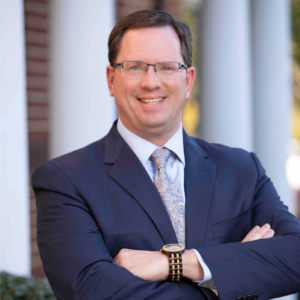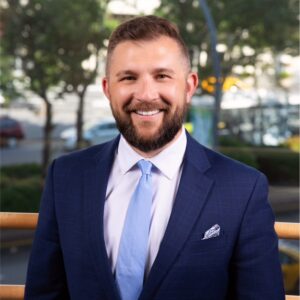The New Caregivers Who Help Residents Age in Place
| BY GEORGENE LAHM |
| The new caregivers who help residents age in place Nonmedical home caregivers are gradually moving into assisted living facilities |
| One of the latest trends in caregiving pairs private-duty nonmedical caregivers with LTC facility staffs in emerging partnerships that can benefit seniors who need an extended level of care. The role of these private nonmedical caregivers has been evolving during the past decade and is helping seniors to age in place. Once thought to be an option primarily to assist seniors at home, the private caregiver now can be found working with seniors in assisted living facilities themselves-helping them transition to a new environment, providing companionship to those with dementia or early Alzheimer’s disease, or accompanying them to additional activities and appointments outside the facility. It’s a relationship that can work well, but only with effective communication and a mutual respect and understanding among all parties involved. “While this trend is new enough that we don’t have a lot of research just yet, there is strong anecdotal evidence that an increasing number of caregivers are following residents into the assisted living setting,” says Geoff Camphire, director of communications for the Assisted Living Federation of America. “This isn’t surprising. As the baby-boomer generation moves into the age range of the typical assisted living facility resident, we expect more of those residents to demand and obtain the care that they need. An assisted living community is a residence home, so residents will have the same level of care that they want and have come to expect in their homes.” “I definitely see this as a trend,” says Amy Birkel, general manager of Remington Heights, a 140-bed assisted living facility in Omaha, Nebraska. Six residents in her facility currently have contracts with private nonmedical caregiving companies to provide additional services. “Our healthcare professionals are working harder to properly diagnose depression and supplement medication with additional management methods, and that’s one of the key places where I see the nonmedical caregiver playing a role: providing seniors who are new to a facility more one-on-one contact and care, as with depression management. Also, more and more people are coming to our facility and actually asking me: ‘Do you know of a nonmedical caregiver I can use?'” Providing transportation and assisting facilities with dementia clients are among other valuable services that nonmedical agencies can provide. Birkel cited two examples from her facility: One of our residents in her mid-80s and in the early stages of Alzheimer’s disease began to experience symptoms of sundown syndrome. At the end of each day, she would start calling our front-desk receptionist, her family at home, and friends from her church at their homes. She wouldn’t necessarily need anything but would repeatedly hang up the phone and call them again. She would be crying and distraught. It was frustrating for us as a facility, as well as for her family, because we weren’t sure how to meet that need. It was a sad situation for everyone. So we sat down with that family and talked about a nonmedical caregiver coming in. It worked wonderfully. The two sat together when she had those panic attacks, or the caregiver would walk with the resident and redirect her attention. Knowing that somebody was right there during that three-hour period every day, listening and giving her one-on-one attention, made all the difference. We had a resident who was in her mid-90s when she moved in and was still very active and socially involved in the community. She loved it here and participated in absolutely every activity we had, but she still wanted more. So the family hired a caregiver, and every day they went to lunch or shopping or to the museum. If she had come into a facility or even stayed at home without that one-on-one individual attention, I definitely think she would have experienced some depression. Companionship can be a vital service for some seniors who need extra help while outside the facility, Birkel says, noting that her staff will transport residents to the shopping mall or doctor’s office, but won’t actually accompany them on their outings; this is when personal care assistants can help. As noted earlier, communication among all parties is the key to making this work. “When a new caregiver comes on board, he or she has to see one of our representatives to go over our facility’s policies and procedures,” Birkel says. “Also, we have a book where they sign in and out, so we know who’s covering if someone’s off for the weekend. Every so often we’ll have meetings with the home service agency, and we do invite the agency manager. Employees are not mind readers, so you have to tell them what your expectations are.” The private caregivers, for their part, have to make every effort to fit in. “We work very hard at getting along with facility staffs,” says Sharon Massafra, franchise owner of Home Instead Senior Care’s office in Bethel, Connecticut (part of the world’s largest provider of nonmedical home care services to the elderly). “Facility staff is usually taking care of several residents, while our caregivers have only one,” Massafra says, “so jealousies can arise. I advise my staff to always introduce themselves and to try to be part of the team.” Birkel says she thinks having a private-duty nonmedical caregiver working in a facility is a positive experience unless, of course, the caregiver isn’t doing his or her job. “We had a husband who helped serve as a caregiver to his wife,” she remembers. “He decided on this facility for his wife so he could get away a little bit more. When he wanted to take a weekend trip, he would hire a nonmedical caregiver. So our staff would go in and do the bathing, help with her medication, and make sure she ate and, during the in-between times, a caregiver was supposed to accompany her to activities or spend time doing a puzzle with her. When my staff would walk in and check on her periodically during the day, however, they would often find the caregiver watching television or reading the newspaper. So, we sat down with the family, and told them of our concerns and what we were seeing. I also called the agency manager, just to let her know, since we had a good relationship.” In the end, the family opted for a different caregiver from the same agency, and it worked out well. “If communication is kept strong, there really shouldn’t be problems,” Birkel says. “Ultimately, it’s the family that contracts with the agency,” Birkel says, “so communication between agency, facility, and family needs to be very strong. When everyone understands what the expectations are-what the facility will provide, what the agency will provide-this service will contribute to helping people remain independent longer.” Georgene Lahm is a writer based in Omaha, Nebraska. With more than 500 independently owned and operated offices in the United States, Canada, Japan, and western Europe, Home Instead Senior Care is the world’s largest provider of nonmedical home care services to the elderly. For more information, visit www.homeinstead.com. To send your comments to the author and editors, please e-mail lahm0405@nursinghomesmagazine.com. To order reprints in quantities of 100 or more, call(866) 377-6454. |
Related Articles
Topics: Articles











